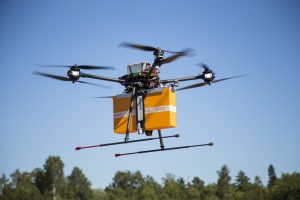With proposals for new regulations on the use of small drones for commercial use in the pipeline, Ignazio Coraci gives his thoughts on the implications of this technology for the future of the air cargo business
The future may very well be unmanned. Whether drones will ever replace the full scale aircraft used by air cargo operators like ASC Cargo and SW Italia is doubtful, but the development of drone technology is already having an interesting implications for our industry.
Big business
 One early sign of the growing importance of drone technology has been the recent deal between DHL and Chines consumer electronics exporter, Shenzhen Youkeshu Technologies. DHL’s Global Forwarding air and ocean freight specialist business has agreed to manage shipments of the Chinese company’s drones and unmanned vehicles to over 100 countries – and while DHL won’t be using drones to make their own deliveries just yet, the quantities of the products being transported are a sign of the rapid growth of this area of technology.
One early sign of the growing importance of drone technology has been the recent deal between DHL and Chines consumer electronics exporter, Shenzhen Youkeshu Technologies. DHL’s Global Forwarding air and ocean freight specialist business has agreed to manage shipments of the Chinese company’s drones and unmanned vehicles to over 100 countries – and while DHL won’t be using drones to make their own deliveries just yet, the quantities of the products being transported are a sign of the rapid growth of this area of technology.
The shape of things to come?
Take another recent development – the release of pictures of a prototype unmanned vehicle that could soon be running up to 315 kilos of cargo between Los Angeles and Hawaii. It’s early days of course, but the start up business – called Natilus – is interesting, because the vehicle they’ve created would be able to integrate into the kind of infrastructure that already exists in the industry. The prototype would be able to dock at a traditional maritime port slip – and the team behind it plan to have it up and flying by 2020.
New rules
Finally, the recent legislative proposals by European Aviation Safety Agency (EASA) aim to address the safety issues around the operation of small drones, as well as privacy, security and data protection concerns.
A changing landscape
Ignazio comments: “The legislation shows just how significant this kind of technology is becoming. Whatever the ultimate implications are for the air cargo industry, it’s clear that drones and unmanned vehicles will almost certainly become an important part of the transport infrastructure – and as customers continue to demand delivery systems that are more rapid, more agile and more flexible, everyone in the industry needs to adapt to this changing landscape.”
